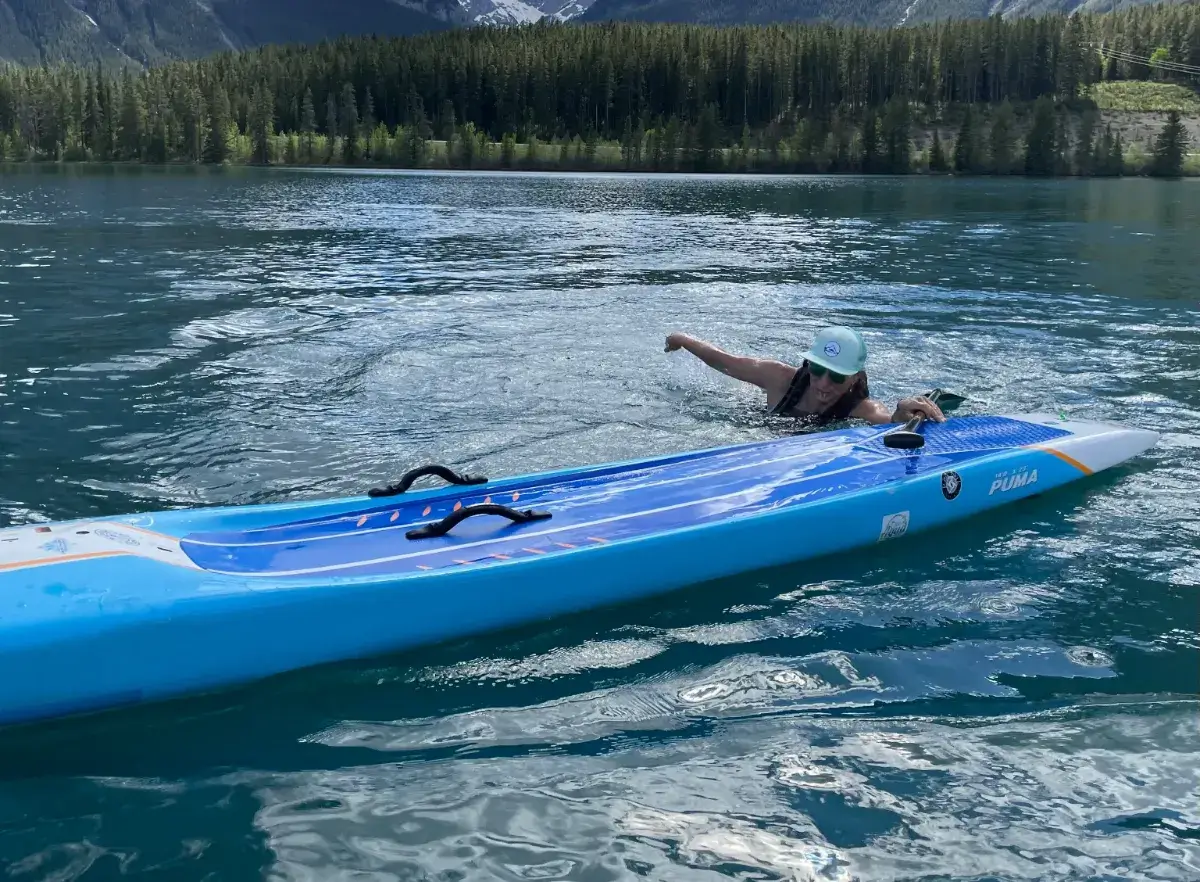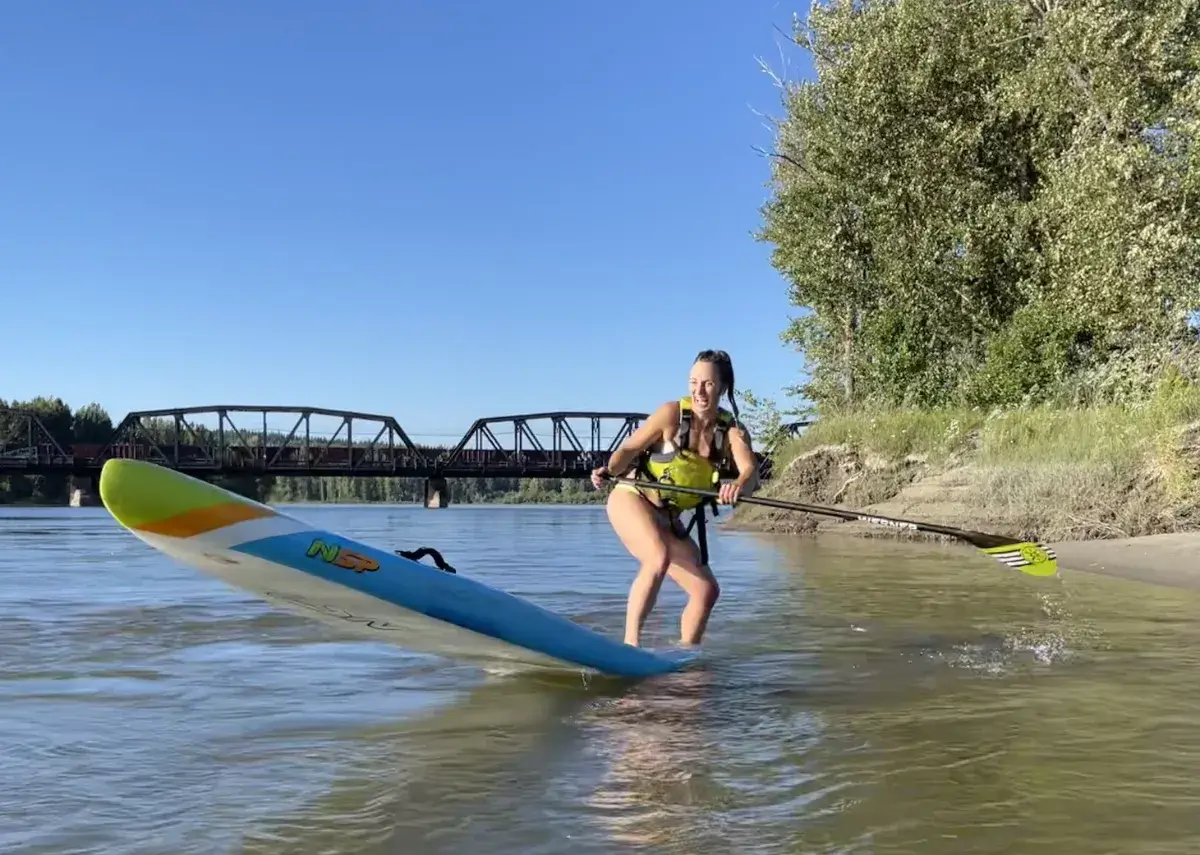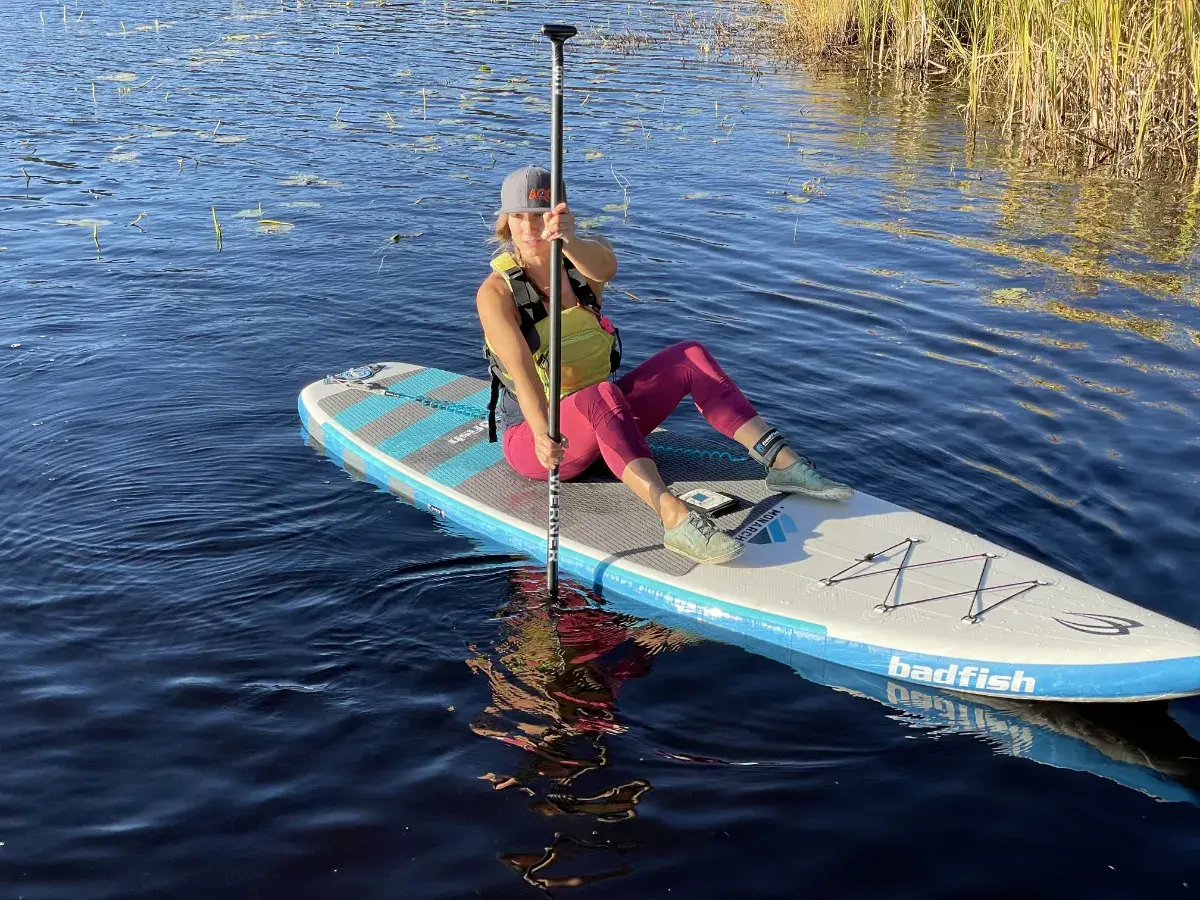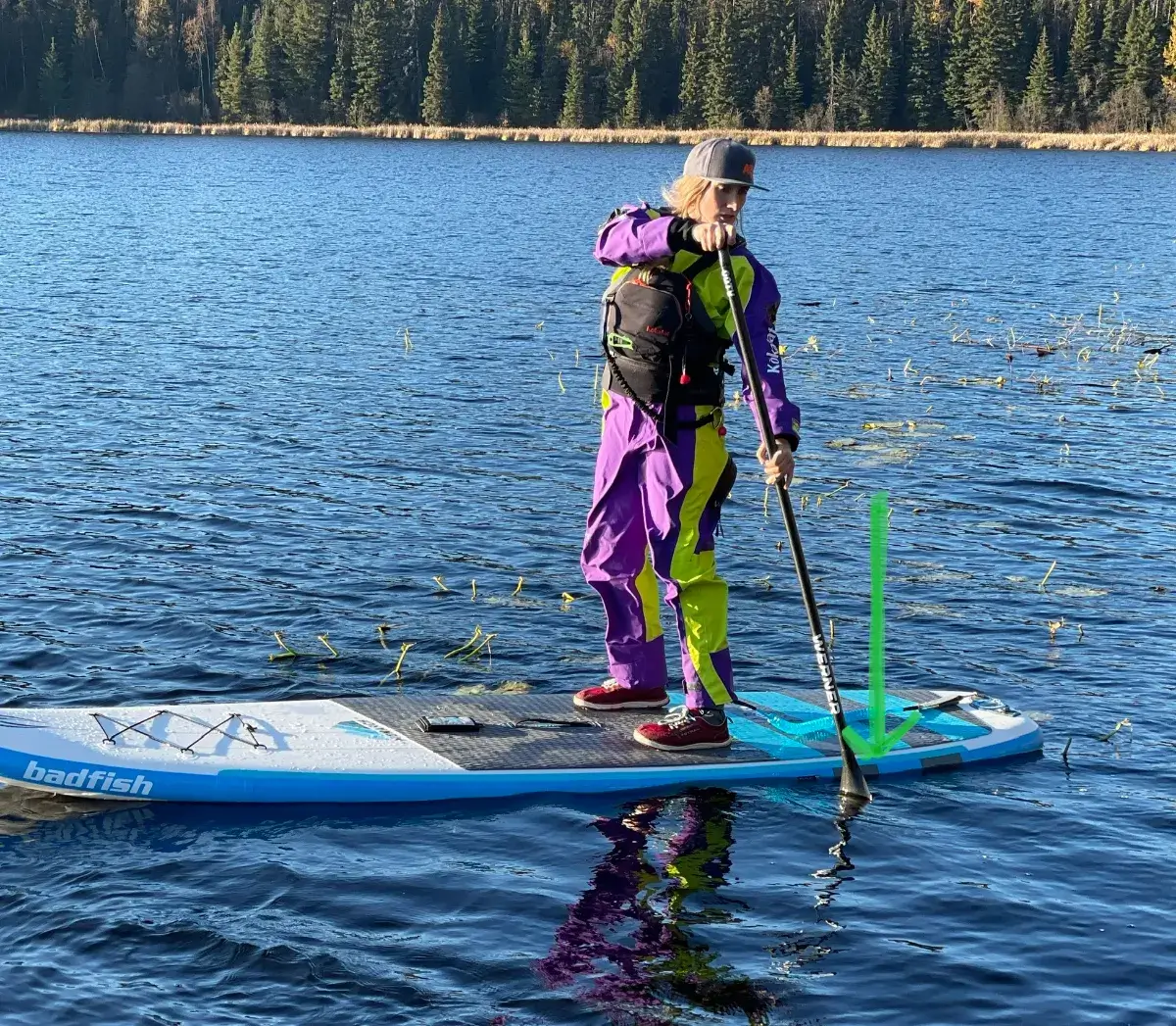One of the most empowering skills in stand up paddleboarding is the ability to self rescue, being able to get back on your board. I want to tear this simple skill apart and show the details that can make or break your ability to get out of the water.
This skill is mandatory to progress to moving water. Being prepared, and falling into the water properly are just the start. Getting back to the board and on it as fast as possible can make or break a paddler staying safe in river environment. Let’s take a closer look.
Shop AQ Outdoors SUP Collection
SUP Self Rescue: How to Get Back On Your Paddleboard
The Fall
Learning to fall flat into the water can make aid in a successful self rescue. Think like a starfish: spread your surface area out to prevent yourself from sinking deeper. This will help prevent hitting bottom, of course though depending how deep the water is.
Falling in is not a diving or cannonball contest. Keep yourself safe, and please don’t let go of your paddle, you’ll be needing that.
Fall Flat, Hold onto the paddle
In The Water
Once you are in the water, get to the surface and locate your board. Your leash is a tool to pull the board towards yourself. Grab the leash and pull or swing your legs in the opposite direction of the board under the water.
The leash’s slack will be taken up, pulling the board towards you. This is faster than swimming for the board. It is important to keep your feet up, Do Not Try this is shallow water.
If you are using a coil leash, or a leash that is over 9 feet long this will only take up the slack. It won’t actually pull the board towards you. But from this position you are ready to get on the board, your legs extended in the opposite direction and close to the surface.
Locate, Retrieve
Guide the board so the main middle carrying handle is centred to you. This is the most balanced place to get onto it. Place both hands a couple inches in from the rail of the board. Keep a hold of the paddle. This hand placement and comfort of how to hang onto the paddle will take practice to get used to.
Position board, Hand placement
Getting Onto the Board
Let’s break down this multiple step but all at the same time skill.
First, that PFD you are wearing right?, use the buoyancy to help to spring you back up to the surface. Push your body a little higher out of the water and dunk yourself deeper.
Second, you are going to be pushing down on the board with your hands in order to push your body up and out of the water. As you reach full arm extension slightly pull the rail into your hip/pelvic line.
Third, utilize your legs. Kick as if you are swimming. This helps to create the momentum to push your body onto the board.
Dunk, Push up, Kick All at the same time
“Flop” your upper body from the hip line up onto the deck of the board. With the hand closest to the tail, place it across the board from the other. At this time shift to get your knee and leg up on the deck of the board.
The knee should be slightly bent. Push up on your hands and knee to finish getting on the board . You should be facing in the direction of the nose of the board. Quickly get to your kneel paddling position and ready yourself to paddle to safety if need be.
Knee, Push Up
SUP Self Rescue Common Problems
Pulling on the rail of the board
Paddlers will reach for the opposite rail of the board and attempt to pull themselves onto the board. A person pulling on the opposing rail and pushing down on the side they are attempting to get up on will cause the board to flip. Also the deck is designed to give the paddler traction, so pulling yourself onto it will only equal resistance.
If there's a fellow paddler pulling on their opposing rail, hold down that side of the board to help them.
The widest part of the board
If you can’t get on the middle of the board. Don’t use the nose of the board as the leash might be at full extension making movements more restrictive. You can always try closer to the tail. Usually the tail end of the board is a bit narrower and the deck padding will help so you don’t slide off.
Not getting high enough to the hip/pelvic line
Without getting the body high enough it will be difficult to get that first knee onto the board. This action of pushing down on the board can be practiced. Do you ever remember being a kid at the swimming pool and climbing up onto the pool deck without a ladder? This is the exact motion, you can go to the local pool and practice
Hanging up on your PFD
Getting hung up on your PFD can either be corrected changing your angle ever so slightly that you are pushing down on the board with.
SUP Self Rescue Closing Thoughts
Self rescue is absolutely needed if you want to stand up paddleboard on a river. It also is important in keeping yourself safe on flatwater adventures. It also puts less strain on the fellow paddlers around you, knowing that you can get back onto your board and out of the potentially cold water. This is a basic flat water skill but the mastery of it becomes increasingly important as paddlers develop further into the sport.
“Dreams don’t work unless you do”
Kimberley Kenyon
Badfish Team Athlete
Kokatat Team Athlete
AQ Outdoors Whitewater SUP
Advanced and River 1 SUP Instructor Paddle Canada
@borntoboard.ca
Shop AQ Outdoors SUP Collection
AQ Outdoors Contact
Edmonton: (p) 780 463-4892 (e) info@aquabaticsedmonton.com
Calgary: (p) 403 288-9283 (e) info@aqoutdoors.com









